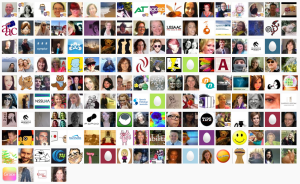AGOSCI2013 – The Final wrap-up
May 6, 2013 Leave a comment
4 Days. 3 pre-conference workshops. 3 keynote presentations. 90 concurrent sessions. 3431 Tweets. 250+ participants.
No wonder everyone is exhausted! We have laughed. We have cried. Sometimes we have done both. But damn we connected well.
Sitting back now and reflecting on the week there were a couple of themes that kept coming through for me. Bear with me whilst I highlight them.
We need to work together. This was phrased in a number of different ways across the sessions. Dr Sarah Blackstone’s call to action was for us all to get a seat at the table. Several sessions said successful AAC outcomes are the result of a team of specialists coming together. That includes IT + OT + SP. Personal ego’s and agendas need to be left at the door and we need to work together to define and deliver solutions that restore the basic human rights that are taken away when we deny someone the opportunity to communicate. And we definitely need to keep the information sharing going.
We need to demand that communication is on the agenda. Not just paid lip-service, actually on the agenda across ALL levels of organisations, from the Board down. All the other projects and processes and procedures mean nothing unless people can effectively communicate and have their voices heard. Yes/No options just don’t cut it any more. And we need to demand authentic communication acts that are appropriate. There was one session (and I must apologies I cant recall which, maybe Sheridan Forsters) where an example was given of a care worker standing 3 feet away from a deafblind and saying hello, and thinking that was good communication. News Flash. IT ISN’T!
We need to celebrate successes. So many brilliant stories came out during the conference. We need to tell them more. We need to inspire others to strive for what they want, not accept what society tells them they can achieve. We need more people like Melinda to mentor and be a role model for the children coming through. We need to hold people like Melinda and Georgia and Darryl up so they can say ‘See, we can do it. We can have a valued role in society. So can you’ – that may come across as sounding patronising, it certainly isnt intended to be.
Model, model, model. We need to constantly reinforce the practises and communication acts that we are teaching. We can’t just give up because it is ‘too hard’ or because the person we are supporting isnt picking it up at the pace we want. It isnt about us. It’s about them. We do things at their pace. In the way that they can understand. In their language, using their AAC. And we keep doing it in a respectful way that respects their dignity. Period.
Communication Access for All. This again was highlighted in numerous sessions. It needs to be made a priority from central government down. Without access for everyone we are depriving people of basic human rights, not to mention breaching the UN Convention on the Rights of Persons with Disabilities. I think the work that Scope Victoria is doing with the Communication Access symbol is revolutionary and needs to have the full support and backing of government to make it a priority and enshrine it in legislation. I am so excited about it I have put it onto my to-do list of action points from the conference.
 I am humbled to have the privilege of returning to my organisation to share the knowledge gained over the last week. NZ Maori have a concept of the baskets of knowledge. In our cultural room we have them hanging up waiting to receive more knowledge and to share the knowledge already gained. I think we need bigger baskets now.
I am humbled to have the privilege of returning to my organisation to share the knowledge gained over the last week. NZ Maori have a concept of the baskets of knowledge. In our cultural room we have them hanging up waiting to receive more knowledge and to share the knowledge already gained. I think we need bigger baskets now.





